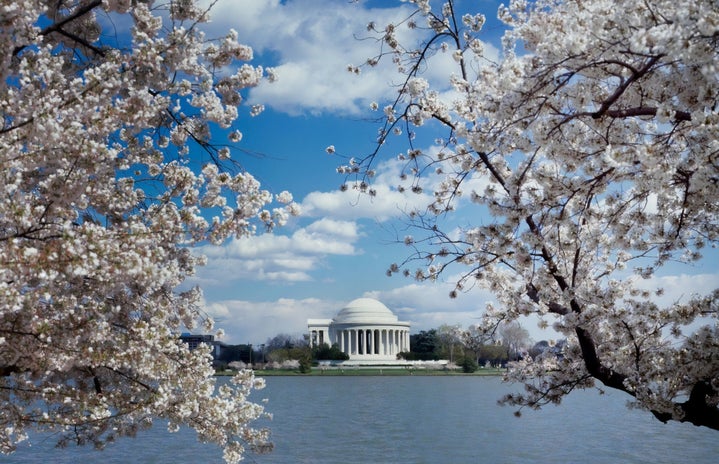“Ah yes, the man with all the questions. Ticket, please,” the conductor requests.
*using hole puncher to encrypt a message onto the golden ticket*
“What are you putting on my ticket?” the boy, Chris, asks impatiently.
“Hold, please,” the conductor utters.
“It says…” the little boy whispers.
All of the small hole punches stringed together spell the word BELIEVE.
“Oh, it’s nothing I need to know…” the conductor declares.
*cue dramatic music*
The snippet above is from the Christmas classic, “The Polar Express.” The one major takeaway from this movie is the importance of….well, you guessed it: believing. It is a popular Christmas film with many themes intertwined throughout the movie, but my personal favorite is this ending scene where the little boy learns about the correlation between patience and believing. And as many of us know, patience is no easy task, especially in these last few weeks of winter. Here in the Midwest, we are on the horizon of spring, the brink of sunshine filled days and happier moods (it’s about time if you ask me!). It’s almost as if winter is a marathon and right now, we are at the part of the race where we can see the finish line. If we can only…
Keep.
On.
Waiting.
Patiently.
But what does that even mean—waiting patiently?
Winter gets a bad reputation, and I, for one, love seeing people outside walking on campus and seeing flowers bloom after the gloomy winter. But if we were to skip ahead to the good part, we would miss out on the lessons that we are supposed to learn right now when it comes to persevering at the end of winter. One of the most evident lessons that comes to mind: patience.
Similarly to winter, I think patience also gets a bad reputation. Over time, it has become embedded in our everyday society as merely transactional; it has become the essence of a conditional statement. “If X, then Y.” You’ve seen this in geometry, but I would like to shed light on something (hopefully!) more relatable than finding the degree of an acute triangle.
“If you wait patiently, then you’ll get what you’ve been waiting for.”
“If you wait patiently, then you’ll start to feel fulfilled.”
“If you wait patiently, then maybe the lingering wounds will finally begin to heal.”
“If you wait patiently, then maybe you’ll start liking your reflection in the mirror.”
“If you wait patiently, then maybe you’ll start to feel like yourself again.”
“If you wait patiently, then maybe you will start to love yourself more.”
Society has convinced us that we must exchange patience in return for getting something we desperately want—no, need—more. But at what cost? Our life is a story of solitary confinement, and knowing that patience is useful is the ultimate game changer. Patience isn’t something we should have to conduct an opportunity cost analysis for—it’s something that we should welcome in our lives. Patience has turned into something passive, which is when something has been done to someone. However, it actually is active because patience is the action and tells us what someone is doing. It’s knowing that we have to work tirelessly on being patient, that it isn’t something that simply just happens to us. It’s learning to meet ourselves where we are at by allowing ourselves a moment of grace. Most importantly, patience is a breeding ground for enjoying precious moments and possibilities.
I propose that when we catch ourselves trading in patience for something that will supposedly fulfill us more, we simply embrace the uncomfortable feeling of patience. Yes, it is undoubtedly uncomfortable. But in those moments in which we have no idea what’s to come and we are forced to sit and be still, it is those seemingly, never-ending moments when the answers just won’t come soon enough—it is those moments where we can learn to practice patience.
In a letter from the editor in her quarterly magazine “Magnolia,” Joanna Gaines addresses the purpose of patience when she writes, “Nature is never in a hurry, and deep down, I know to be patient—that just as it has every year before, spring will eventually arrive in promise and plenty. But the wait from here to there gets tricky. Trying to find comfort in the void is where I start to get a little uncomfortable. Without any honest cues about what comes next, with nothing to tether my feet to the ground, waiting can feel a lot like drifting.”
Waiting can feel a lot like drifting—retweet that one! I think that last line depicts what we are all feeling: that with patience comes uncertainty, and with uncertainty comes anxiety, and so forth. It’s a never ending downward spiral, and those never seem to end well. It’s learning to understand the beauty behind patience. It’s learning that:
Patience can be difficult, but it can also be positive.
Patience can be painful, but it can also be an opportunity.
Patience can be unfamiliar, but it can also be necessary.
Patience can be uncomfortable, but it can also be exciting.
Patience can be overwhelming, but it can also be beautiful.
Patience can be a process, but it is also a sign of growth.
Patience can be unpredictable, but it can also be revelatory.
As we approach spring and embrace this idea of forward-looking, we can learn to be where our feet are, use what we have and do what we can to embrace patience. It is in the small, ordinary, purposeful pauses when we are called to be patient that allow us to learn. And that’s what it’s all about, right?


